What are the symptoms of HIV during the incubation period?
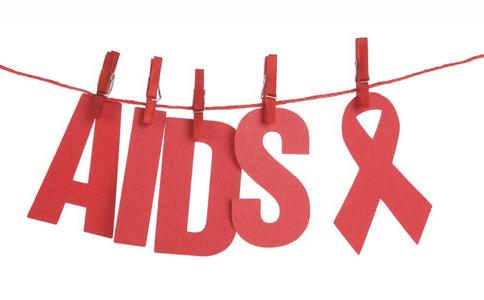
What are the symptoms at the onset of the disease if you are infected with AIDS?
First of all, let's learn about the progression of AIDS: the incubation period of AIDS begins when you are infected with the virus, and before the emergence of combination therapy with the use of new drugs, the incubation period lasts for five to ten years on average, depending on the level of self-care of the individual, but it may be even longer. In other words, during this period, the infected person does not show any symptoms and can live and work as normal. It is not until the body's immune system is completely destroyed by HIV that the person loses his or her immunity and develops opportunistic infections that lead to the onset of the disease. In children, the incubation period is short, about 1 year on average.
When the virus enters the human body, it produces antibodies, and the current test is based on the detection of antibodies. However, at this point, the antibody concentration is not high enough to produce the correct result, and the test must wait for a certain period of time, which is called the "window period". For the vast majority of people, the window period is three months long. In other words, if you had risky sex on December 1, the window period would begin to run, and the effective test date would be March 1, in other words. A further requirement is that you do not have any other risky sexual activity during the three months, otherwise the test must be recalculated.
The early symptoms of AIDS HIV caused by slow progressive infection, has a long symptom-free incubation period, the average incubation period of 7-10 years, about 4-10% per year to develop into AIDS, the incidence rate of 65% within 12 years, 95% within 15 years, a small number of infected 17 years after the onset of the disease has not yet developed; after the onset of the disease course of an average of 1.5 years. In a long incubation period, although the infected person has no conscious symptoms, the appearance of a normal person, but the body's immune system continues to be damaged by HIV, to the immune system can no longer maintain the function of the minimum defense ability, a variety of pathogenic microorganisms that do not cause disease in normal people will make the patient conditionally infected, causing brain, lung, gastrointestinal and other parts of the brain and symptoms of the lesions. Some malignant tumors can also develop as a result of extremely low resistance. Symptoms of AIDS can vary depending on the internal organs where the conditioned infection occurs and the location of the tumor. The common symptoms in the early stage of AIDS are as follows:
(1) General symptoms of persistent fever, weakness, night sweats, swelling of superficial lymph nodes throughout the body, and weight loss of up to 10% or more within three months, up to 40%, with the patient's emaciation being particularly pronounced.
(2) Respiratory symptoms Prolonged cough, chest pain, dyspnea, blood in sputum in severe cases.
(3) Gastrointestinal symptoms such as decreased appetite, anorexia, nausea, vomiting, diarrhea, and in severe cases, blood in the stool. Drugs usually used to treat gastrointestinal infections are ineffective in treating this type of diarrhea.
(4) Neurological symptoms such as dizziness, headache, unresponsiveness, mental retardation, mental abnormality, tics, hemiplegia, dementia, etc.
(5) Skin and mucosal damage Diffuse papules, herpes zoster, inflammation and ulceration of the mucous membranes of the mouth and throat.
(6) Tumors A variety of malignant tumors may be present. Kaposi's sarcoma located on the body surface can be seen as red or purplish-red macules, papules, and infiltrating masses.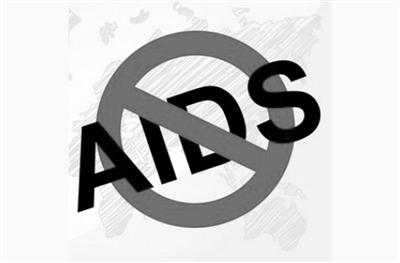
That's why the symptoms of HIV are so complex. A significant number of people can be infected with HIV without any noticeable symptoms for up to ten years. However, their blood and semen still contain the virus. During this time, if risky sexual activity occurs, the virus will be transmitted to a sexual partner. So having no symptoms does not necessarily mean that you have not been infected. Here are some of the first symptoms of HIV infection and their incidence. These symptoms usually appear within 2-4 weeks of infection. It takes an average of 3 months before the infection is confirmed by a blood test. So if you have recently had risky sexual activity and a few of these symptoms, be sure to see your doctor:
1. persistent low-grade fever (93%) 2. fatigue (90%) 3. unexplained laryngitis (70%) 4. sudden weight loss of more than 10% (70%) 5. headache (60%) 6. nausea (60%) 7. muscle and joint pains (60%) 8. night sweats (50%) 9. persistent diarrhea (50%) 10. skin rash (40%)
I hope this is helpful! Welcome to the discussion!
AIDS is a translation of Acquired Immune Deficiency Syndrome. It is transmitted by the human immunodeficiency virus through sexual contact, blood, blood products or mother-to-child transmission, causing severe defects in the immune function of the body's cells, leading to persistent opportunistic infections, malignant tumors and neurological damage. There is currently no effective treatment. Treatment includes antiviral, enhancement of immune function and treatment of secondary infections. There is no effective treatment available. AIDS patients infected to the onset of disease: children average 12 months, adults average 29 months, survival time women shorter than men, blacks survival time is the shortest. The most important thing is early diagnosis, timely treatment can prolong the patient's survival time. Sexual intercourse is prohibited during treatment, and sexual partners are examined and treated at the same time.
The window period is the period between the entry of HIV into the human body and the production of a sufficient amount of HIV antibodies in the blood to be detected by a test. Although HIV antibodies cannot be detected during the window period, HIV is already present in the body and can be detected through HIV nucleic acid testing, so infected people in the window period are also infectious. At present, with the continuous development of HIV testing technology, the widely used third and fourth generation of double original sandwich method and enzyme assay and chemiluminescence method and other means of detection of HIV window period can be shortened to 14 to 21 days. In this regard, the World Health Organization (WHO) clearly indicates that the window period for AIDS is 14 to 21 days. Some infected patients develop viremia and clinical symptoms resulting from acute damage to the immune system, similar to epidemic influenza-like or infectious mononucleosis-like symptoms. Most patients have mild symptoms that resolve after 1 to 3 weeks. Fever is the most common manifestation, accompanied by sore throat, night sweats, nausea, vomiting, diarrhea, rash, arthralgia, swollen lymph nodes and neurological symptoms. If similar symptoms occur after high-risk behaviors, it is important to be aware of them.
It is recommended to seize the time to go to the government-run people's hospital dermatology and venereology outpatient clinic, the physician through face-to-face questioning, physical examination (vision, touch, buckle, listen, measure) after the decision of the necessary laboratory tests, combined with the history of differential diagnosis to rule out. The key is to make a clear diagnosis, exclude the use of drugs and other contraindications to treatment, and then in accordance with the diagnostic and therapeutic norms, drug instructions, treatment guidelines or expert consensus, etc., to adjust the medication regimen, standardize the use of medication after a clear question about the use of medication.
Symptoms 1. Systemic symptoms, the main disease patients tend to weight loss, was relatively thin this change AIDS is even thinner, often down 5-10 kilograms, there will also be fatigue and drowsiness occurs, mainly not able to support normal physical strength, always feel the body has no energy, AIDS latency symptoms also include chronic diarrhea, often diarrhea, we do not think that eating bad things, there are It may be AIDS.
Symptom performance 2. swollen lymph nodes, generally some people will appear this situation, but not all swollen lymph nodes are AIDS, some people may be due to a cold and fever, there may be swelling of the situation, the general AIDS enlarged lymph nodes mainly in the armpits and the back of the neck, generally gently press the pain, the skin to the skin to be no change.
Symptoms 3. Skin damage, usually with AIDS, often damage occurs in the private parts, warts, hives or rashes, the whole body becomes itchy because of the presence of inflammation.
AIDS is a horrible and deadly disease. However, AIDS is relatively a chronic disease, that is to say, when people are infected by HIV, they will not die immediately. So, what are the symptoms of HIV during the incubation period?
The onset of AIDS is divided into four stages: latent, pre, intermediate and late, and the symptoms and conditions of each stage are different. Symptoms are not obvious in the incubation stage and include the following.
1、Gastrointestinal symptoms
A latent AIDS patient carries HIV inside his body and the virus is in a state of massive replication and value addition in the body. The presence of the virus stresses our immune system, resulting in diarrhea, vomiting, anorexia, gastrointestinal bleeding, and a host of other gastrointestinal symptoms.
2. Symptoms of the nervous system
When the patient is in the incubation period, there are also corresponding neurological symptoms such as dizziness and headache, mental depression, atrophy, etc. At this time, the patient's response to external stimuli will show slower than normal.
3. Systemic symptoms
People with HIV in the incubation period also experience flu-like symptoms: fever, cough, and weight loss, which are often easily dismissed as the common cold.
Although these symptoms may appear during the incubation period of HIV, they are not characteristic of HIV and are similar to those of common diseases, so they can easily be misdiagnosed as common diseases. Moreover, it is impossible to detect the presence of HIV in the body during the incubation period.
Instructor: Zhou Lijun, Deputy Chief Physician, Department of Infection, General Hospital of Tong Coal Group Company.
He specializes in the treatment of chronic liver disease, bacillary dysentery, typhoid fever, brucellosis, and infectious diseases such as chickenpox, hand-foot-mouth disease, mumps, scarlet fever and measles in children.
If you find this article useful, please feel free to like or recommend it to your friends and follow [Medlink Media].
After HIV enters the human body, the body's immune system starts to fight against it. When the body's immune function prevails, the infected person can show no symptoms or symptoms are not obvious. Without antiviral treatment, HIV continues to multiply and has a strong destructive effect, and the body's immune function is gradually weakened, resulting in various symptoms caused by low immunity. For example, recurrent low-grade fever, fatigue, emaciation, chronic diarrhea, swollen lymph nodes, skin rashes, and scratching. When the immune system of HIV-infected patients is so severely damaged by HIV that it cannot maintain a minimum resistance, serious opportunistic infections, tumors, etc., will occur and HIV-infected patients develop into AIDS patients.
Therefore, AIDS itself does not have specific symptoms, but manifests various symptoms and manifestations of human immunodeficiency, and there are many kinds of diseases that can cause human immunodeficiency. Therefore, it should be emphasized that if you want to know whether you are infected with HIV or not, you cannot rely on the symptoms to make a judgment, but must do a blood test.
Modern people look at AIDS and almost talk about it, especially those who are not sexually active. AIDS is an extremely dangerous infectious disease, mainly transmitted sexually and through blood, with almost no possibility of cure.
Two to six weeks after HIV infection, a small number of people (about 2%) will show some symptoms of acute infection, including fever, rash, rigors, lymph node enlargement, myalgia, abdominal pain and diarrhea, and aseptic meningitis in individual patients. Examination reveals normal white blood cells but increased monocytes, a mild decrease in the proportion of lymphocytes and a mild decrease in platelets, followed by a persistent asymptomatic period, i.e., the incubation period of AIDS. The incubation period of AIDS is between six months and twenty years, and although there is infection, problems do not necessarily arise within a short period of time.
Symptoms of HIV latency are more prominent and are characterized by the following three main manifestations:
I. Systemic symptoms. The most common clinical symptoms of AIDS patients are recurrent low-grade fever (about 72%), accompanied by chills, lethargy, fatigue, sudden weight loss, followed by extreme lethargy and weakness, and inability to support usual physical activities. Chronic diarrhea is also a very obvious early clinical manifestation in some AIDS patients, and the cause of the fever, diarrhea and weight loss is often not found.
Second, the appearance of swollen lymph nodes. The incidence of this symptom is 55% to 100%. When the generalized lymph node enlargement occurs in patients of high-risk groups and cannot be explained by other reasons, it is likely to be related to HIV infection. Although the enlarged lymph nodes are generalized, they are mostly found in the lymph nodes at the back of the neck, submandibular or axillary lymph nodes, and the enlarged lymph nodes are not fused, hard, with occasional tenderness, and there is no change in the surface skin.
Third, the appearance of skin damage. Skin and mucous membranes are one of the main parts of the AIDS invasion, and many AIDS patients have skin damage as the first symptom. There are a variety of clinical manifestations, such as rashes, generalized itching, warts, contact warts, urticaria and so on.
For the sake of your family and your own health, you must be clean, as long as you have a clean sex life and don't use blood products easily, you usually won't be infected with AIDS. Although AIDS is an incurable disease, but the way of transmission is very small, and the incubation period of AIDS is long, coupled with the rapid development of modern medicine, the future is very likely to overcome this medical challenge.
Follow "Family Doctor Online" headline, more health Q&A easy to see~~~~
The AIDS incubation period refers to the time from the onset of HIV infection to the appearance of signs and symptoms of AIDS. It takes 0.5 to 20 years, or 7 to 10 years on average, for the human body to develop AIDS after infection. The length of the incubation period is related to the number and type of the infected virus, the route of infection, the immune status of the body, nutritional conditions and living habits. Some people who have not yet developed the disease may remain hidden for a long time or even for the rest of their lives and become AIDS carriers. HIV-infected persons in the incubation period have HIV in their blood, semen, vaginal secretions, breast milk and organs, and are infectious.
1. The first major symptom of AIDS is: systemic symptoms, when the patient after the onset of symptoms will appear repeatedly fever, and is a low fever, and loss of appetite, body thinning, fear of cold, mental instability, and extreme lethargy do not want to activities, many patients will also appear chronic diarrhea.
2. The second major symptom of AIDS is: swollen lymph nodes, the occurrence of swollen lymph nodes is 55% to 100%, swollen lymph nodes are generalized, especially the back of the neck lymph nodes and axillary lymph nodes are the most obvious and most common, but the surface of the skin does not change.
3. The third major symptom of AIDS is: skin damage, AIDS patients will appear skin and mucous membrane damage, and is one of the first symptoms after the onset of the disease, the patient will have a rash, itching all over the body, but also the appearance of Kaposi's sarcoma, warts, hives and other problems.
As long as the patient adheres to the treatment, maintains a regular routine, healthy diet and appropriate exercise, together with a good state of mind, it is possible to remain disease-free for a long time.
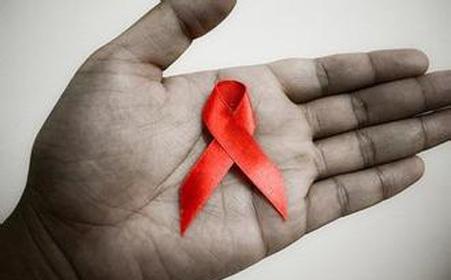
The incubation period of HIV usually has no obvious symptoms, just like normal people.Latency period averages 8 - 10 years
1, systemic symptoms about 72% of HIV-infected patients will have recurrent low-grade fever, accompanied by fatigue, lethargy, chills, weight loss of 5 to 22 kilograms, followed by extreme lethargy and weakness, and inability to move around. Chronic diarrhea is also one of the common symptoms.
2, skin symptoms skin mucous membrane is one of the main parts of HIV invasion. Many AIDS patients have skin damage as the first symptom. There are a variety of clinical manifestations, such as rash, generalized itching, condyloma acuminatum, contact warts, urticaria and so on. However, the most characteristic skin damage is the skin changes of Kaposi's sarcoma.
3, the incidence of enlarged lymph nodes is 55% to 100%, and when patients in high-risk groups present with enlarged lymph nodes throughout the body that cannot be explained by other causes, it is likely to be related to HIV infection. The enlarged lymph nodes, although generalized, are most often found in the posterior cervical, submandibular, or axillary lymph nodes. The enlarged lymph nodes are non-fusing, hard, occasionally painful, and have no surface skin changes. The degree of lymph node enlargement correlates with the level of HIV antibody in the serum.
In addition, lymph node enlargement may occur in AIDS-associated lymphomas, including Burkitts' lymphoma, immunoblastic lymphoma and Hodgkin's disease.
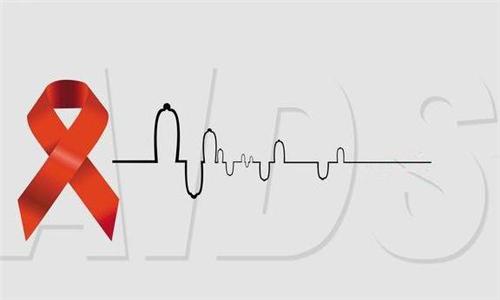
When HIV enters the human body, it quickly enters the acute phase of infection. The virus multiplies rapidly, with millions of viruses per milliliter of blood, and the number of CD4+ cells decreases significantly. The activity of CD8+ cells is believed to be one of the elements that control the level of the virus. If they are strong, they can slow down the course of the disease, but they do not eliminate all of the virus, and as the CD8+ cell activity wanes, the level of CD4+ cells returns to about 800 per microliter (the normal value is about 1,200). It is recommended that if you notice that you are not feeling well, you must seek medical attention promptly to avoid delays.
Hello.
The acute phase of AIDS usually presents with flu-like symptoms, after which it enters an incubation period.
The length of the incubation period varies from person to person, ranging from 3 to 20 years.

Many people are asymptomatic during the incubation period, but some patients experience persistent unexplained lymph node enlargement.
I hope this answer will help you
Dr. Miller.
-Doctor of Clinical Medicine, Peking University, general practitioner, many years of overseas medical experience
Welcome to my headline, only responsible for the delivery of conscientious and reliable medical knowledge or commentaries
Original content, please do not copy, thank you
合作交流请联系wisedoctor@aliyun.com
Three major clinical manifestations of HIV incubation:
I. Systemic symptomsThe most common clinical symptom in AIDS patients is recurrent low-grade fever (about 72% of cases) with chills, lethargy, fatigue, and weight loss, followed by extreme lethargy and weakness, and an inability to support usual physical activities. Chronic diarrhea is also a very obvious early clinical manifestation in some AIDS patients. And the cause of fever, diarrhea and weight loss is often not found. According to the characterization of the clinical manifestations of 38 cases of AIDS, the above symptoms and signs accounted for more than 80% of the total number of cases.
Two, swollen lymph nodesThe incidence is 55% to 100%, and when patients in high-risk groups present with enlarged lymph nodes throughout the body that cannot be explained by other causes, it is likely to be related to HIV infection. The enlarged lymph nodes, although generalized, are most often found in the posterior cervical, submandibular, or axillary lymph nodes. The enlarged lymph nodes are non-fusing, hard, occasionally painful, and have no surface skin changes. The degree of lymph node enlargement correlates with the level of HIV antibody in the serum. In addition, lymph node enlargement may also occur in lymphomas associated with AIDS, including Burkitts lymphoma, immunoblastic lymphoma, and Hodgkin's disease.
III. Skin damageThe skin and mucous membranes are one of the main sites of AIDS attack. Many AIDS patients have skin damage as their first symptom. There are various clinical manifestations, such as rash, generalized itching, acromegaly, contact warts, and urticaria.
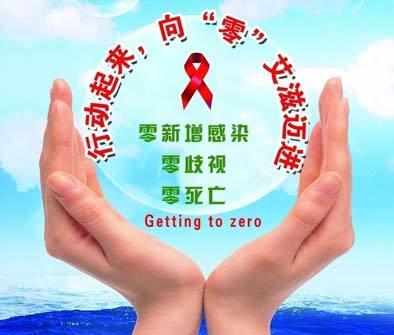
This question and answer are from the site users, does not represent the position of the site, such as infringement, please contact the administrator to delete.